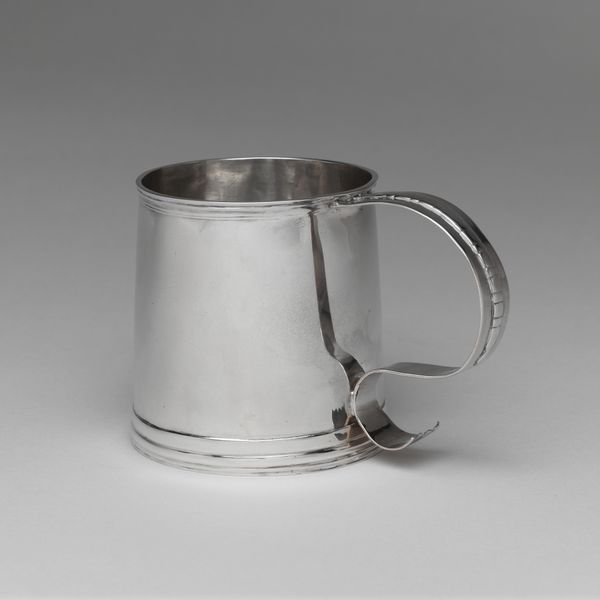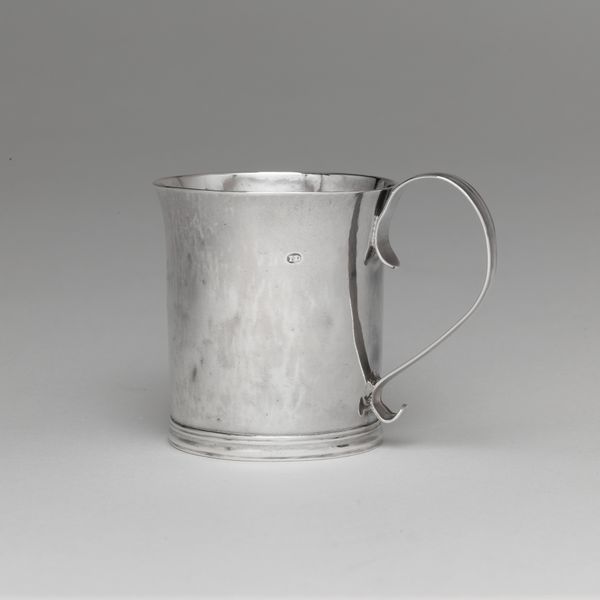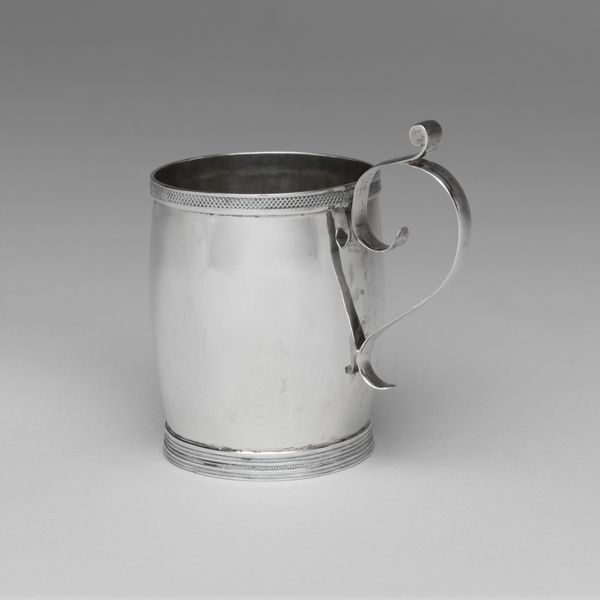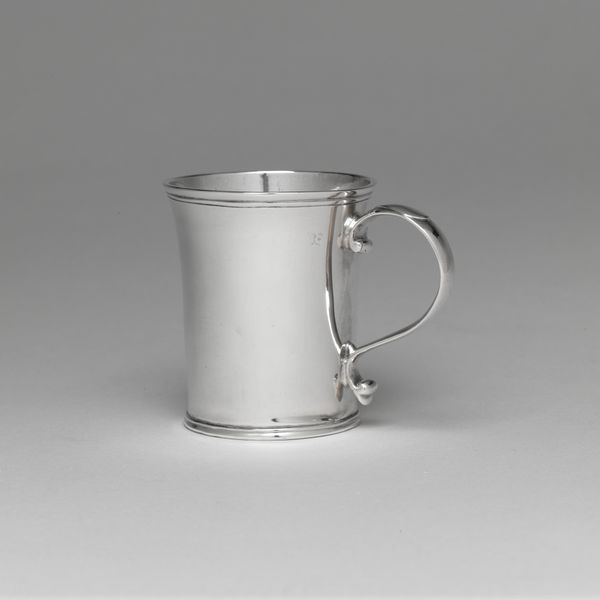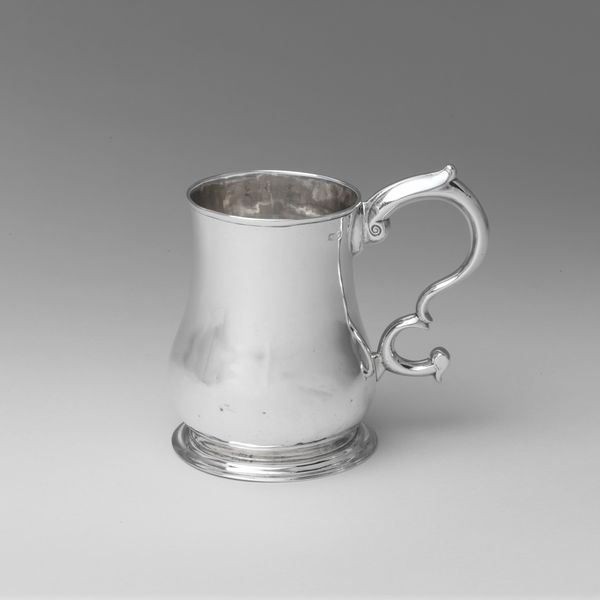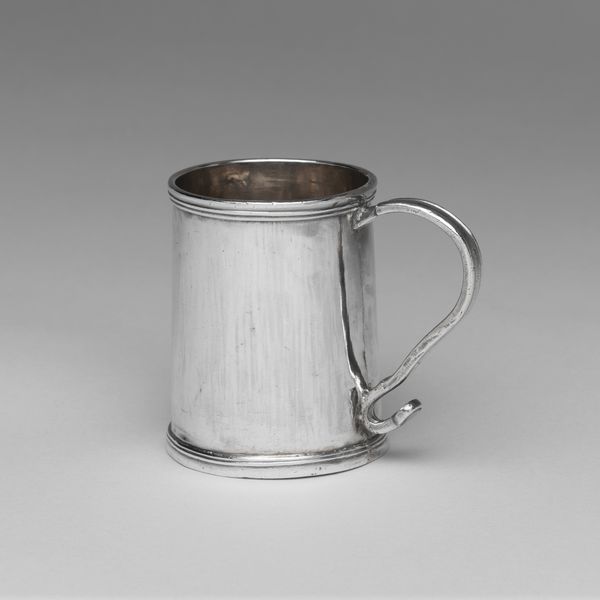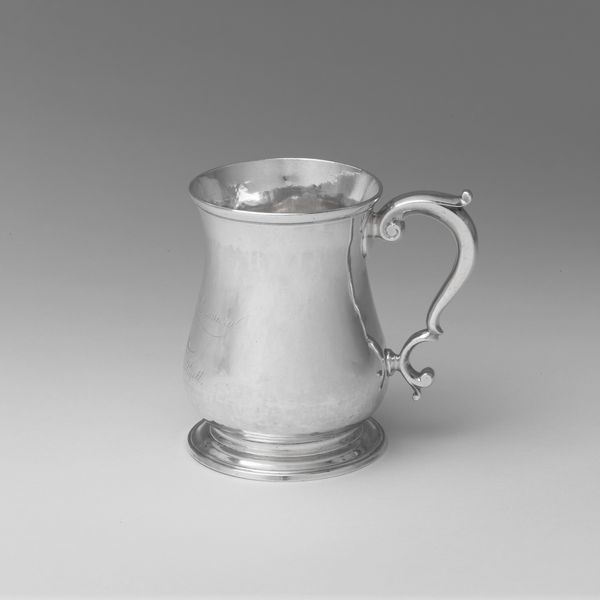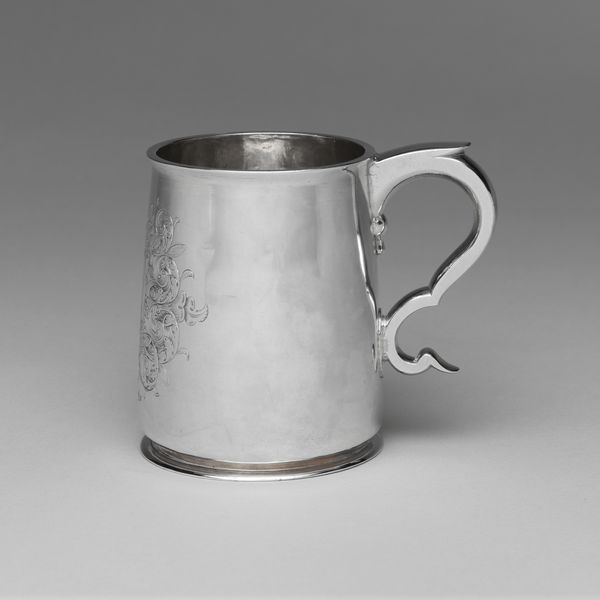
silver, metal, sculpture
#
silver
#
metal
#
sculpture
#
united-states
#
product photography
#
decorative-art
Dimensions: Overall: 2 7/8 x 3 1/2 in. (7.3 x 8.9 cm); 2 oz. 4 dwt. (68.3 g) Lip: Diam. 2 9/16 in. (6.5 cm) Base: Diam. 2 5/16 in. (5.9 cm)
Copyright: Public Domain
Editor: So, here we have a "Child's Cup," crafted between 1850 and 1870 by Albert Coles, using silver. It strikes me as so... precious. Almost fragile. What do you see when you look at this object? Curator: I see a powerful intersection of status and fragility. Think about access: silver objects during this time were symbols of wealth and privilege. Who had access to this cup, and by extension, the opportunities it represented? Was this 'child' male or female, and how might that have shaped their experience? Editor: That's fascinating! I hadn't considered the gender implications. So, the cup isn't just a simple drinking vessel. Curator: Precisely! It's a loaded object, hinting at societal power structures. The cup would’ve reinforced expectations based on class and possibly gender from the earliest age. Were they taught specific gender roles in childhood by eating/drinking out of it, and how were expectations reinforced by social interactions? Editor: It's amazing how one object can hold so much significance. The craftsmanship is beautiful, but I understand now that the cup goes way beyond decoration. Curator: Indeed! Considering objects like these lets us question how material culture can shape our understanding of identity, privilege, and social norms throughout history and how those inequalities impact the present. Editor: Thank you, this object raises all kinds of compelling historical and social questions! I’m thinking about decorative arts very differently now.
Comments
No comments
Be the first to comment and join the conversation on the ultimate creative platform.

